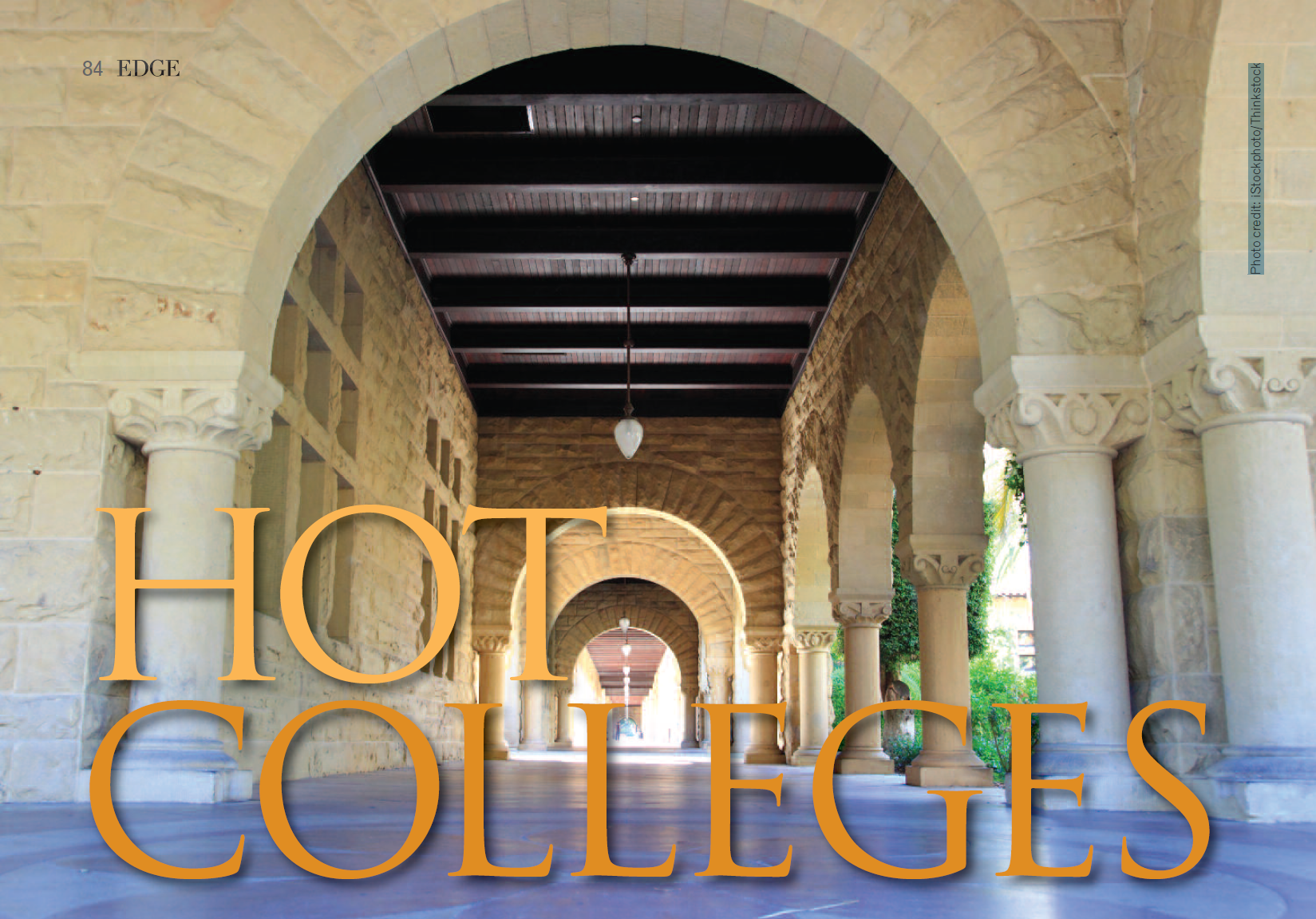The Cold, Hard Fact
New Jersey’s number-one export is college-bound seniors. During each application period, the nation’s top colleges are flooded with applications from the Garden State. It’s a numbers game that works against our kids. However, if you do a little homework, there are definitely ways to make the numbers start working for you. So with the dark winter of college acceptance letter anticipation upon us, let’s look back at the 2011 application period and see what it has to teach next year’s juniors and seniors. First things first. For the mournful applicants who threw their hats in the Early Decision ring at Ivies such as Brown University—which accepted only 900 of the 2,900 applications—ED now stands for Early Disappointment. Ditto Northeastern, which deferred an inordinate amount of highly qualified Garden Staters. The story was the same in one popular school after another. Indeed, many of our young and talented “intellectual-istas” are now pacing the library aisles hoping that fat envelope shows up in April…and wondering what went wrong. What went wrong is that they all chased after the same hot colleges, essentially forcing the hands of admissions officers to say No. Geographical diversity is a high priority at most top schools. Translation: we can only take so many kids from New Jersey. How do you swing those odds in your favor? That process starts during the critical first steps in the college search and application process.

Photo credit: iStockphoto/Thinkstock
MANAGING EXPECTATIONS In order to have successful outcomes, an ounce of expectation management is worth any of those one-pound college guides you’ll be buying at the local Barnes & Noble. Understand where your college-bound child fits into the overall admissions picture. For instance, while GPA is a healthy indicator of a student’s success in college, a 3.0 at The Lawrenceville School is quite different than a 3.0 at nearby Trenton Central High School—with due respect to both. Standardized test scores are also useful in helping a student (and more importantly his or her parents) determine whether or not the student is likely to be admitted or likely to be rejected by a given college. Beyond those quantitative indicators, one must acknowledge that college-admission decisions can also turn on relationships. In addition to an “in” or connection at a school, however, students must also demonstrate a knowledge of the culture and mission of that college—and articulate that interest throughout the application. To do so, successful applicants must really know the colleges to which they are applying. And if that school is a “hot” school, well, they really need to bring their A-Game to the application.
IDENTIFYING A HOT COLLEGE Long before work begins on applications, you can start creating a wish list of schools. That list will almost certainly be populated by a number of hot colleges. That’s fine and that’s fun, but look at those schools and ask yourself, how many of them were popular five or ten or fifteen years ago? Where I’m going with this is that there are a lot of schools right now primed to “join” the hot list. Your job is to identify them before everyone else does. Beating the competition to a hot college is much like picking a stock. First, observe how the school performs over a period of time. Frankly, this is one of the major reasons families come to people in my business. Educational consultants visit numerous college campuses, read The Chronicle of Higher Education and other pertinent periodicals, attend symposia and present at conferences, and nurture ethical relationships with admissions representatives—all on their clients’ behalf. Of course, you can “day-trade” and do the work yourself. Begin by identifying and tracking a college of interest. Some points to consider are: Has this school made a jump in rankings and/or is it rankings-aware? Has there been a recent shift in leadership? Are the current students and grads singing the school’s praises? How strong are the career services and what companies recruit on campus? This information isn’t always easy for a layperson to access or understand, but the more you amass, the better your results will be. One good publication that is literally the length of a church bulletin is the CollegeBound newsletter (collegeboundnews.com), which is very readable and provides real-time admission numbers. I tweet these bitesize stats daily.
NAMING NAMES Without specifically advocating these institutions as bestfits for any individual, here are a couple of examples of what I’m talking about. Ever heard of High Point University, in North Carolina? If not, you will. I have been following High Point for some time now. It has all the earmarks of a hot college due to the leadership of its president, a former CEO with a business-savvy approach to student satisfaction and success. The graduating senior entering just four years ago probably would not be accepted this year in the Early Action pool. Size, location and price-point make this college one to watch. Closer to home, I also like what I am seeing at Drexel University. It stands out among the growing number of colleges offering co-op opportunities. Co-op stands for “cooperative,” which is an option at some colleges that enables students to earn course credits for work experience in the form of approved internships (which are frequently paid!). This option is best suited toward pre-professional students who are actively preparing for a career in a specific field, learn-by-doing students, and students who want “a foot in the door.” An inordinately large number of students are hired by the firms at which they completed their co-ops. It’s not hard to see why schools offering co-op programs have seen their popularity and demand rise over the course of the past three years—while at the same time the precarious economy has called into question the value of the liberal arts education in favor of a skill- and career-based undergraduate education. Making industry connections and building up a résumé all appear to be de rigeur at this juncture, but as a purist, I beg to differ that the liberal arts and sciences are passé. In favor of this argument, take Bucknell University. Tucked away in Western Pennsylvania, this Division I college has grown extremely selective in its admissions decisions over that past decade. The emphasis on interdisciplinary study and engaged learning is helping Bucknell produce superlative leaders and self-starters.

Photo credit: iStockphoto/Thinkstock
DOLLARS AND SENSE As college costs skyrocket and family budgets tighten, the “default” pick for many students is the state school or community college. However, that is not necessarily where the higher-education bargains are. Indeed, the changing economy has created some eye-opening options—and potentially an entirely new class of hot colleges. Parents of 10th and 11th grade students at this juncture may want to consider the fact that most students at independent institutions pay less than the published tuition price. According to College Board’s “Trends in College Pricing,” the average student paid $17,000 less than the sticker price at independent colleges and universities in the U.S. in 2010-2011. How is that possible? Federal grant aid for students at state schools is about $3 billion a year. Meanwhile, institutional grants—the free money given to students by the colleges they attend—is around $20 billion! So opting for the state university or community college without exploring the estimated cost after Gift Aid could cost you in the long run. Gift Aid is free money for college that students do not have to pay back. It comes in the form of tuition discounts off the sticker price for attractive applicants. A strong academic profile and high-test scores—which will in turn boost a college’s rankings—are two reasons why colleges would offer Gift Aid to an applicant. By the way, as of last December a mandatory net price calculator must appear on all college web sites. This is a groundbreaking change intended to help families get an early read on the true cost of college. Though each site’s calculator will vary, some will calculate Gift Aid. The bottom line is that the college application process can be a messy one, but it’s definitely manageable. Of the many things that are crucial to keep in mind, perhaps the most important is that college is not a one-size-fits-all prospect. The right school, hot or not, is out there for your collegebound son or daughter. The more effort you put into identifying that school, the better your chances for a positive outcome.
Editor’s Note: When Erin is not authoring articles, she runs Avery Educational Resources (averyeducation.com). She also does pro bono work with children who lost parents on 9/11. A Division I varsity athlete and a competitive Irish step dancer, she holds two Master’s degrees from Oxford and Yale Universities, respectively.





